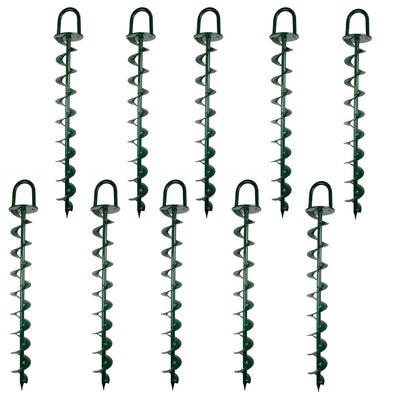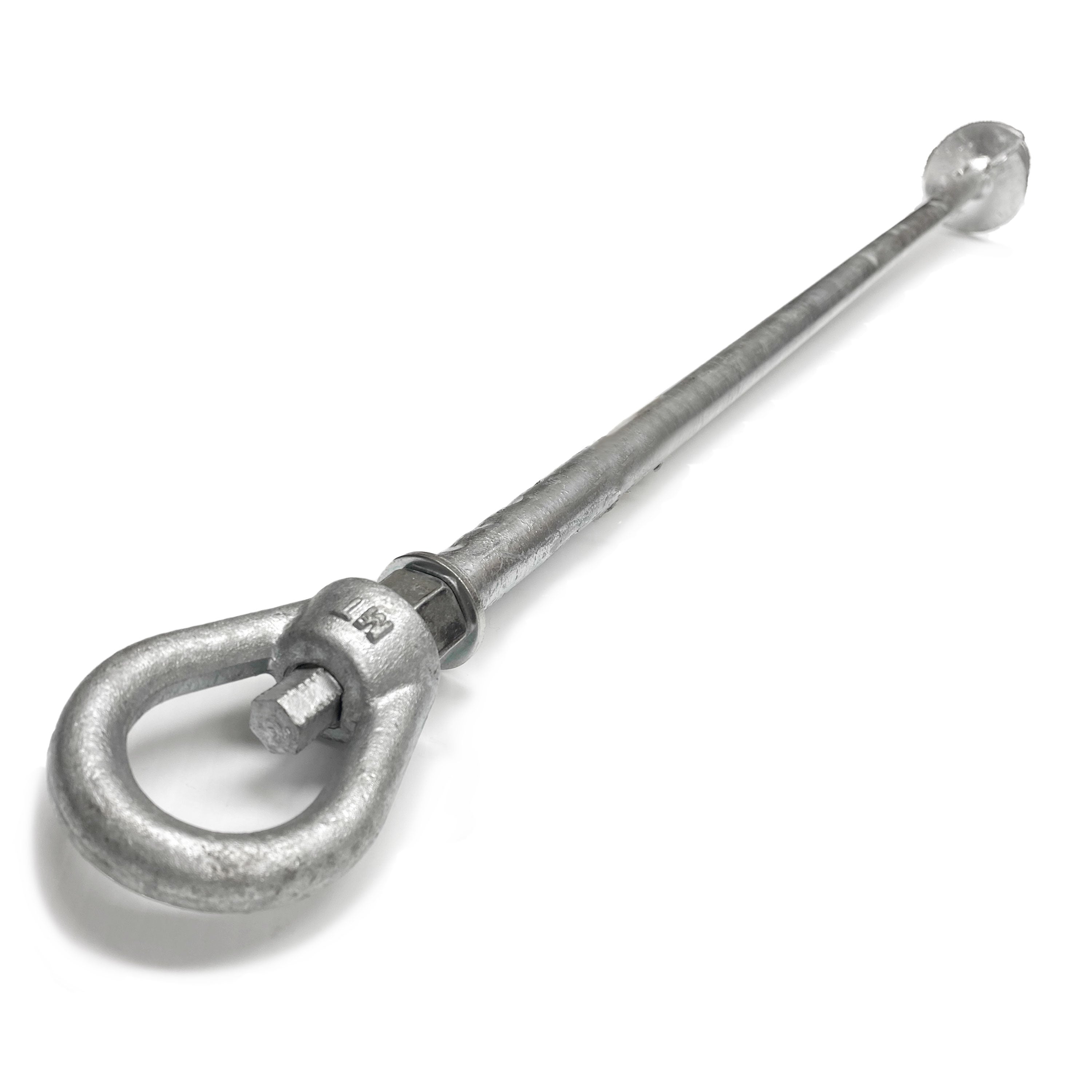Explore the Various Sorts Of Ground Support for Your Following Job
When beginning on a building and construction or landscaping task, understanding the different kinds of ground supports offered is critical to ensuring both stability and sturdiness (Ground Anchor). From auger anchors, which succeed in diverse soil conditions, to risk supports made for short-lived installations, the choices are many. In addition, concrete and screw anchors existing distinct benefits in specific circumstances, while deadman anchors are customized for applications requiring resistance to side forces. The selection of an ideal anchor kind can dramatically affect the general success of your task, triggering additional expedition into their corresponding benefits and applications.

Auger Anchors
Auger anchors are a popular selection in various building and construction and landscape design projects due to their distinct layout and effective anchoring abilities. These anchors are composed of a helical screw-like shaft that is driven right into the ground, enabling a secure and secure hold. The spiral style facilitates easy installment and optimizes resistance versus side pressures, making auger supports especially effective in applications such as fencing, short-term structures, and erosion control.
The installment procedure of auger supports is relatively straightforward. Auger supports can be conveniently removed and reused, which adds to their cost-effectiveness and sustainability.
One of the considerable advantages of auger anchors is their ability to distribute loads equally across the surrounding soil, decreasing the danger of soil disturbance and lessening environmental effect. Additionally, they are less susceptible to heaving or loosening up with time compared to traditional securing techniques. Consequently, auger anchors are a superb option for projects needing long lasting and reputable anchoring options.

Stake Anchors
When it involves securing frameworks in a selection of outdoor applications, stake anchors use a trusted and uncomplicated service. These supports are generally constructed from resilient products such as steel or aluminum, created to stand up to ecological tensions while supplying optimum stability. Their basic layout allows for fast installment, making them an ideal selection for long-term or momentary anchoring requirements.
Stake supports are particularly useful in safeguarding outdoors tents, canopies, and various other light-weight structures against wind and climate. They operate by being driven right into the ground at an angle, developing a solid hold that withstands pull-out forces - Ground Anchor. The effectiveness of risk anchors relies on a number of variables, consisting of dirt type, moisture web content, and the angle of installation
For added safety, numerous risk supports include attachment factors for ropes or straps, allowing for stress adjustments as required. In applications such as landscaping or building and construction, they can efficiently maintain equipment or structures on unequal surface. In general, risk supports give a functional and cost-effective option for securing numerous outside setups, making them a favored choice for service providers and do it yourself fanatics alike.
Concrete Anchors
Concrete anchors give a durable solution for securing frameworks to concrete surfaces, making sure stability and safety in various applications. These supports are important for jobs ranging from property constructions to large-scale industrial installations. They come in various types, consisting of development supports, sticky anchors, and undercut supports, each designed for certain tons requirements and environmental problems.
When mounted,Development supports depend on mechanical devices to grasp the concrete. They are excellent for medium to durable applications. Adhesive anchors make use of high-strength epoxy or resin to bond the anchor to the concrete, using superior load-bearing abilities, specifically in fractured concrete situations. Undercut anchors produce an unique shape within the concrete, offering remarkable holding power, especially in applications where tensile tons prevail.
Choosing the suitable concrete anchor involves taking into consideration aspects such as the weight of the tons, the condition of the concrete, and ecological conditions. Appropriate installment techniques are important to guarantee optimal performance and reliability. When find more executed properly, concrete supports considerably improve the structural honesty of different projects, making them vital in modern building practices. Comprehending the particular requirements of your task will help in choosing the ideal sort of concrete support for the task.
Screw Anchors

Screw supports are a functional attaching service that can be efficiently utilized in a selection of applications where traditional concrete supports might not be sufficient. These anchors include a helical design that allows them to be conveniently driven right into the ground, making them perfect for use in soil and various other substrates. Their distinct framework offers exceptional holding power and resistance to pull-out forces, making them appropriate for many projects, from landscape design to architectural assistance.
One of the primary benefits of screw anchors is their convenience of installment. They call for minimal equipment and can frequently be mounted without the demand for excavation, which saves both time and labor prices. Furthermore, screw supports can be eliminated and reused, using a sustainable option for momentary applications.
Screw supports are particularly valuable in locations where soil conditions are challenging, such as loosened or sandy soils. Their capability to be mounted at differing depths enables personalization based upon specific project needs. Generally, screw supports supply a trusted and efficient securing approach, making them an outstanding option for engineers and specialists seeking efficient services for their projects.
Deadman Anchors
Deadman supports function as a durable solution for supporting structures in difficult problems, specifically where conventional anchoring methods may fail. These anchors are composed of big, heavy items buried underground, which create resistance against side forces. The design usually includes a horizontal component, such as article a block of concrete or a steel plate, hidden in the soil, to which straps or cable televisions are attached.
The performance of deadman anchors depends on their capacity to disperse lots over a bigger area, decreasing the threat of failing in unpredictable soil conditions. They are particularly advantageous in applications such as retaining wall surfaces, momentary structures, and slope stablizing, where soil movement can endanger the stability of the framework.
Setup of deadman anchors calls for mindful planning to guarantee they are placed at the right depth and alignment, maximizing their load-bearing capacity. While they may call for more labor and material than light-weight anchors, their integrity in adverse conditions makes them very useful for lasting projects. Additionally, deadman anchors are functional and can be adjusted to various applications, making them a go-to selection for designers encountering unique challenges in their tasks.
Final Thought
In More about the author recap, choosing the appropriate sort of ground anchor is important for ensuring security and safety in various tasks. Auger supports stand out in diverse dirt problems, while stake anchors match momentary applications. For concrete surfaces, expansion and adhesive supports offer trustworthy choices, and screw supports provide convenience in tough terrains. Deadman supports are especially effective in standing up to lateral pressures for preserving wall surfaces. Careful consideration of these alternatives will certainly enhance project end results and structural stability.
Additionally, concrete and screw anchors present distinct benefits in certain situations, while deadman supports are customized for applications needing resistance to side forces - Ground Anchor.Auger anchors are a preferred choice in different building and landscape design jobs due to their one-of-a-kind layout and reliable securing abilities. They come in various kinds, including expansion anchors, sticky anchors, and undercut anchors, each designed for particular load requirements and environmental conditions
Adhesive supports use high-strength epoxy or resin to bond the support to the concrete, offering remarkable load-bearing abilities, especially in cracked concrete situations. Generally, screw anchors provide a effective and trustworthy anchoring method, making them an outstanding choice for professionals and designers seeking reliable remedies for their jobs.